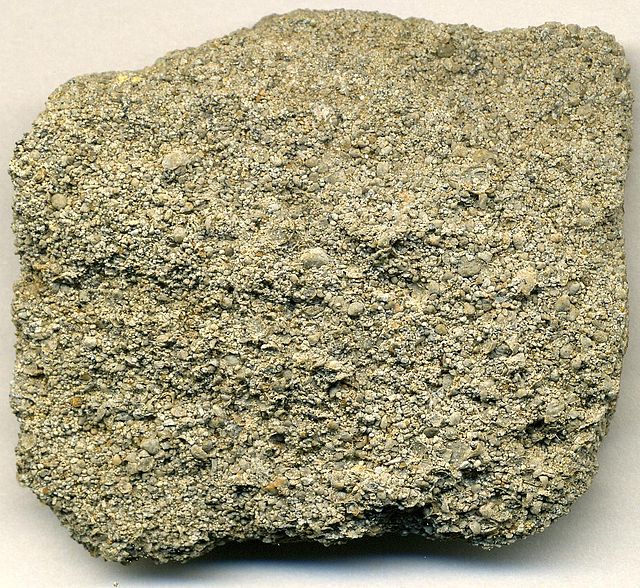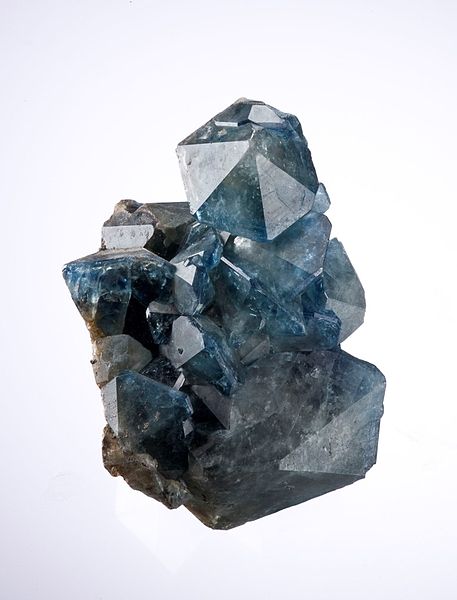Phosphorite, phosphate rock or rock phosphate is a non-detrital sedimentary rock that contains high amounts of phosphate minerals. The phosphate content of phosphorite (or grade of phosphate rock) varies greatly, from 4% to 20% phosphorus pentoxide (P2O5). Marketed phosphate rock is enriched ("beneficiated") to at least 28%, often more than 30% P2O5. This occurs through washing, screening, de-liming, magnetic separation or flotation. By comparison, the average phosphorus content of sedimentary rocks is less than 0.2%.
Peloidal phosphorite, Phosphoria Formation, Simplot Mine, Idaho. 4.6 cm wide.
Fossiliferous peloidal phosphorite, (4.7 cm across), Yunnan Province, China.
Guano phosphorite mining in the Chincha Islands of Peru, c. 1860
Phosphorite mine near Oron, Negev, Israel.
Fluorapatite, often with the alternate spelling of fluoroapatite, is a phosphate mineral with the formula Ca5(PO4)3F (calcium fluorophosphate). Fluorapatite is a hard crystalline solid. Although samples can have various color (green, brown, blue, yellow, violet, or colorless), the pure mineral is colorless, as expected for a material lacking transition metals. Along with hydroxylapatite, it can be a component of tooth enamel, but for industrial use both minerals are mined in the form of phosphate rock, whose usual mineral composition is primarily fluorapatite but often with significant amounts of the other.
Fluorapatite (pink) on top of muscovite (green)
Fluorapatite grains in carbonate groundmass. Photomicrographs of thin section from Siilinjärvi apatite ore.
Fluorapatite. São Geraldo do Baixio, Doce valley, Minas Gerais, Brazil.







